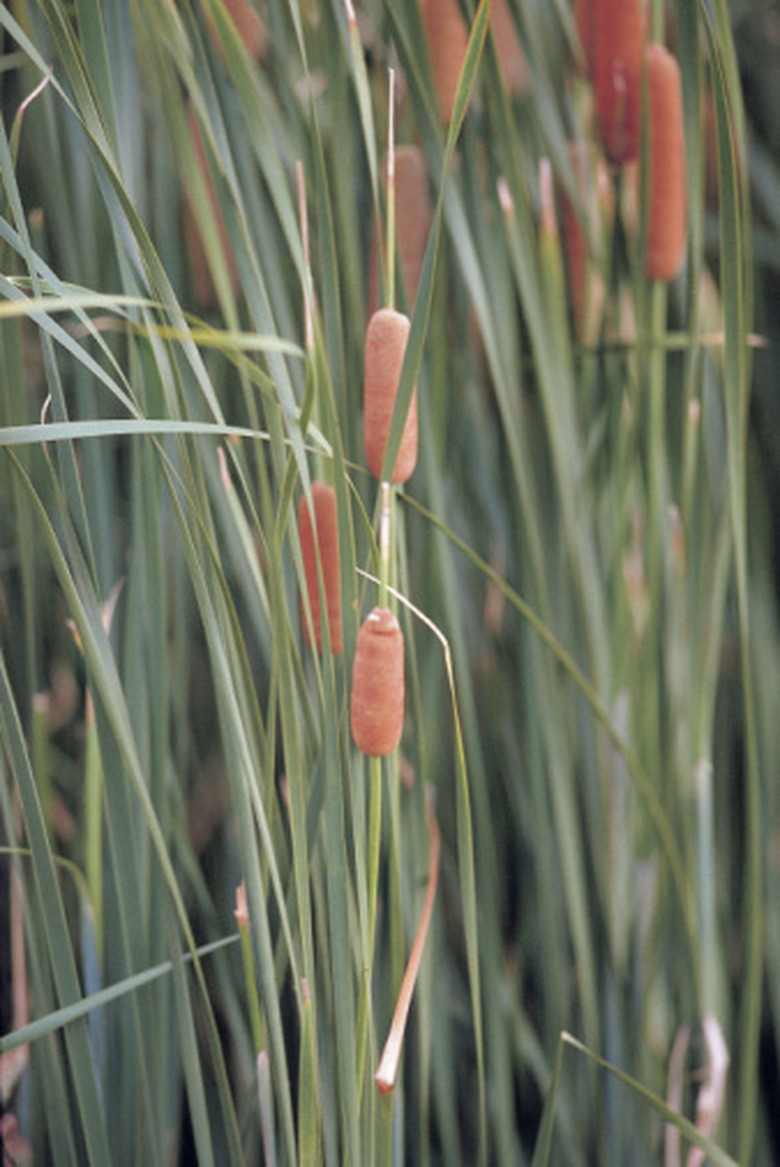How To Get Rid Of Cat-O'-Nine-Tails In Ponds
Things Needed
- Garden shears
- Gasoline-powered mower
- Gasoline-powered weed eater
- Chemical herbicide
Tip
The addition of fish, such as carp, or ducks to your pond may be useful in the elimination of some cattails, as these animals often nibble on the root structure or the cattail stalks and leaves, resulting in the consumption and death of some cattails. This method is not an effective means of control by itself, however, and should be combined with other methods.
Cat-o'-nine-tails, or cattails, are plants that grow in and around ponds, streams, lakes and marshes. These plants have long, tall stalks topped with a brown "tube" filled with the seeds of the cattail. Cattails, in small amounts, are beneficial to the aquatic environment where they grow. In large quantities, however, they take over a pond and ruin its visual appeal. Cattails in your pond can be maintained through the use of certain tools and procedures.
Step 1
Pull new cattails from your pond with your hands. This method works best for cattails that have just begun to grow in your pond (and are about 6 inches above the pond's surface) or have just begun to spread from an area of your pond within which you wish to keep cattails confined. Grasp the cattail as close to the base as you possibly can and pull up as much of the plant and its roots as you can. Be vigilant with this method, as your success in controlling cattails in your pond depends on it.
- Cat-o'-nine-tails, or cattails, are plants that grow in and around ponds, streams, lakes and marshes.
- Cattails, in small amounts, are beneficial to the aquatic environment where they grow.
Step 2
Use sharp garden shears to cut away new cattails (when they are about 6 inches above the pond's surface). Cut the plants before they have a chance to form leaves, to prevent the plants from moving nutrition to their roots. This will result in the plants' death. Vigilance is key with this method, as well. This method works well in conjunction with pulling up the plants.
Step 3
Cut away cattails growing on the banks of your pond with a mower. Do this once the heads (the brown tubes) are well formed, but not fully mature. One month after the first mowing, when the cattails have regrown to 2 to 3 feet tall, mow them again. This method kills up to 75 percent of cattails cut with the mower. Exercise caution using a mower near ponds, however, and only use it to cut cattails growing on the banks of the pond, not in the pond itself.
- Use sharp garden shears to cut away new cattails (when they are about 6 inches above the pond's surface).
- Do this once the heads (the brown tubes) are well formed, but not fully mature.
Step 4
Cut cattails growing on the banks of ponds and in ponds with a gasoline-powered weed eater. Use the weed eater to cut cattails on the banks as closely to the base of the plant as possible, and cut cattails in the pond as closely to the pond's surface as possible. Never submerge your weed eater into the pond, as it could seriously damage your weed eater. Never use an electrically powered weed eater near water to avoid electrocution; only use a gasoline-powered weed eater for safety reasons.
Step 5
Add a chemical herbicide, such as Diquat or Glyphosate, to your pond according to the directions on the bottles. These are herbicides that are effective in killing aquatic plants such as cattails. This method should be avoided by those who do not wish to harm other plants or animals in their pond, as these chemicals are potentially hazardous to the pond environment.
- Cut cattails growing on the banks of ponds and in ponds with a gasoline-powered weed eater.
Step 6
Reduce the water level in your pond so that the level is low during cold winter weather. This allows the roots of the cattails to freeze, killing and eliminating unwanted cattails from your pond.
